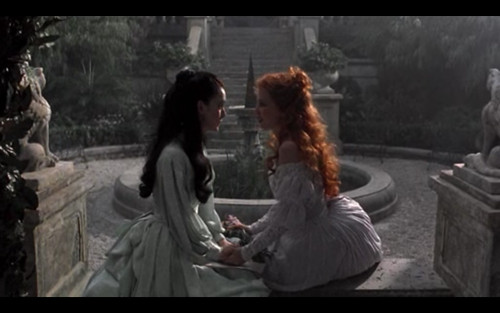For those not in the know here is the article proposing the OSF's intentions.
For those who don't have time:
">
- 36 plays
- 36 playwrights/dramaturgs
- 3 years
- translations of Shakespeare into contemporary English
Three years of employment for 36 of the country's best playwrights and dramaturgs?
Each of them gets to mess around with Shakespeare's text?
A new play is produced?
I love all of this!
There is one thing though...the word "translation" (hashtag appropriate use of quotation marks)
Shakespeare is already in English!
Granted: Shakespeare is written in Early Modern English, which differs greatly from Contemporary English.
Translation:
an act, process, or instance of translating: as
However, I do like what the OSF's literary director says:
< font-family: inherit; font-size: 13px; line-height: 20px;">'Translate’ is an inadequate word because it implies a word-for-word substitution, which isn’t what we’re doing. I’m going for something much more subtle. But I like the rigor that ‘translate’ implies. What excites me the most about this is who will dig into these texts.
There are differences between the early modern English of Shakespeare and contemporary English.So the intention is not to "translate" the texts.
Here is some contemporary English (2015):
The question is: is it better to be alive or dead? Is it nobler to put up with all the nasty things that luck throws your way, or to fight against all those troubles by simply putting an end to them once and for all? Dying, sleeping—that’s all dying is—a sleep that ends all the heartache and shocks that life on earth gives usGood? Understandable? Not exactly the height of poetry.
Mostly because it isn't.
Here is some Shakespeare/Early Modern English (1623):
Same speech.To be, or not to be, that is the Question:1715No more; and by a sleepe, to say we end
Spelling is a bit weirder
Some Middle English (1100-1450)
Ye seken lond and see for your wynnynges,As wise folk ye knowen all th'estaat Of regnes; ye been fadres of tydyngesAnd tales, bothe of pees and of debaat.Almost completely incomprehensible.
Translation:
You seek land and sea for your winnings,As wise folk you know all the estateOf kingdoms; you be fathers of tidings,And tales, both of peace and of debate.And Old English (5-11th Century):
Hwät! we Gâr-Dena in geâr-dagumþeód-cyninga þrym gefrunon,hû þâ äðelingas ellen fremedon.Oft Scyld Scêfing sceaðena þreátum.Translation:
Lo! the Spear-Danes' glory through splendid achievementsThe folk-kings' former fame we have heard of,How princes displayed then their prowess-in-battle.Oft Scyld the Scefing from scathers in numbers...It is commonly believed that Shakespeare is written in Old English.
Clearly it isn't.
As a written text it can be dense, which can be confusing.
Why?
Because it has been manhandled by everyone since its printing.
All spelling and punctuation in Shakespeare's text has been added or changed over the years
Here is the Folio text of Romeo's speech as printed in 1623:
But soft, what light through yonder window breaks?
It is the East, and Iuliet is the Sunne,
< font-family: inherit;">Arise faire Sun and kill the enuious Moone,
< font-family: inherit;">Who is already sicke and pale with griefe,
< font-family: inherit;">That thou her Maid art far more faire then she:800
< font-family: inherit;">Be not her Maid since she is enuious,
< font-family: inherit;">Her Vestal liuery is but sicke and greene,
< font-family: inherit;">And none but fooles do weare it, cast it off:
< font-family: inherit;">It is my Lady, O it is my Loue, O that she knew she were,
< font-family: inherit;">She speakes, yet she sayes nothing, what of that?
< font-family: inherit;">Pay special attention to the punctuation.
< font-family: inherit;">Here is a contemporary edition:
< font-family: inherit;">But soft, what light through yonder window breaks?<; color: black; font-family: inherit;">795
< font-family: inherit;">It is the east, and Juliet is the sun.
< font-family: inherit;">Arise, fair sun, and kill the envious moon,
< font-family: inherit;">Who is already sick and pale with grief
< font-family: inherit;">That thou her maid art far more fair than she.< color: black; font-family: inherit;">800
< font-family: inherit;">Be not her maid, since she is envious;
< font-family: inherit;">Her vestal livery is but sick and green
< font-family: inherit;">And none but fools do wear it. Cast it off.
< font-family: inherit;">It is my lady. Oh, it is my love!
< font-family: inherit;">Oh, that she knew she were!
< font-family: inherit;">She speaks, yet she says nothing. What of that?
And another:
But, soft! what light through yonder window breaks?
It is the east, and Juliet is the sun.
Arise, fair sun, and kill the envious moon,
Who is already sick and pale with grief,
That thou her maid art far more fair than she:
Be not her maid, since she is envious;So even at a literary level people have taken liberties.
Her vestal livery is but sick and green
And none but fools do wear it; cast it off.
It is my lady, O, it is my love!
O, that she knew she were!
She speaks yet she says nothing: what of that?
But, Shakespeare is a playwright, a dramatist.
His work is meant to be performed, staged.
The work that OSF is doing is better defined as adapting Shakespeare's original text
Adaptation:
make (something) suitable for a new use or purpose; modify.
Now, mind you, I am in support of this.
Let the record show that.
However, I am deeply interested in the words that we use, especially when dealing with Shakespeare.
Because the buzz line:
Shakespeare to be translated into Modern Englishon every website and streaming news outlet is inaccurate and a lie.
Because it is already Modern English and translation is inappropriate usage.
So let us be clear
The OSF is adapting Shakespeare's canon into Contemporary EnglishNow, I am left to wonder if it is necessary to do so...
Subject of another post.





